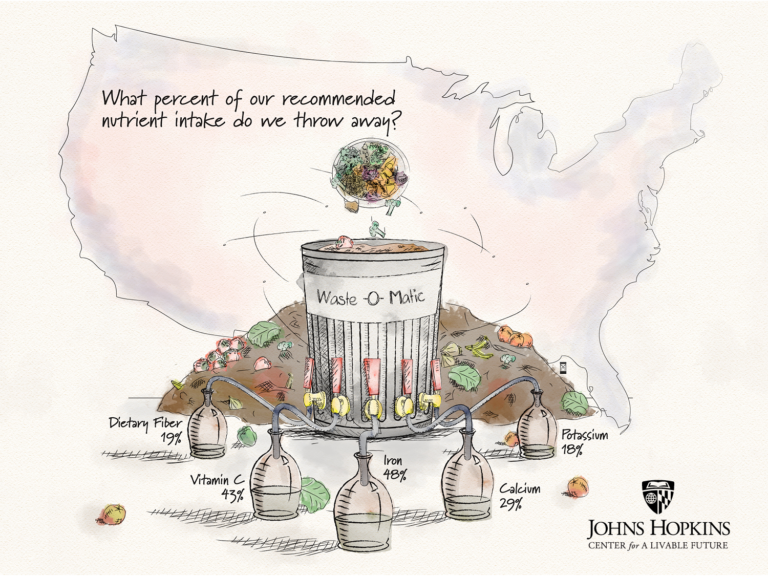Abstract
Background
Previous research has estimated that wasted food in the United States contains between 1,249 and 1,400 kcal per capita per day, but little is known about amounts of other nutrients embedded in the 31% to 40% of food that is wasted.
Objective
This research aimed to calculate the nutritional value of food wasted at the retail and consumer levels in the US food supply, and contextualize the amount of nutrient loss in terms of gaps between current and recommended intakes and estimated food recovery potential.
Design
Data from the National Nutrient Database for Standard Reference were used to calculate the nutritional value of retail- and consumer-level waste of 213 commodities in the US Department of Agriculture Loss-Adjusted Food Availability data series for 27 nutrients in 2012.
Results
Food wasted at the retail and consumer levels of the US food supply in 2012 contained 1,217 kcal, 33 g protein, 5.9 g dietary fiber, 1.7 μg vitamin D, 286 mg calcium, and 880 mg potassium per capita per day. Using dietary fiber as an example, 5.9 g dietary fiber is 23% of the Recommended Dietary Allowance for women. This is equivalent to the fiber Recommended Dietary Allowance for 74 million adult women. Adult women in 2012 underconsumed dietary fiber by 8.9 g/day, and the amount of wasted fiber is equivalent to this gap for 206.6 million adult women.
Conclusions
This was the first study to document the loss of nutrients from wasted food in the US food supply, to our knowledge. Although only a portion of discarded food can realistically be made available for human consumption, efforts to redistribute surplus foods where appropriate and prevent food waste in the first place could increase the availability of nutrients for Americans, while saving money and natural resources.


